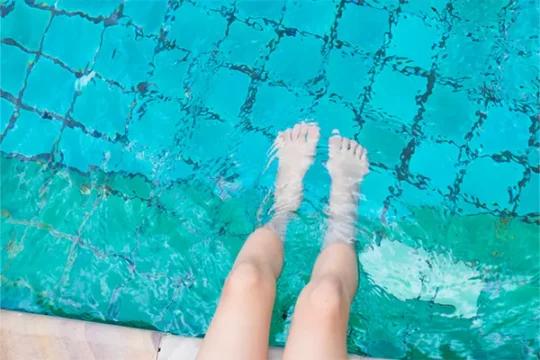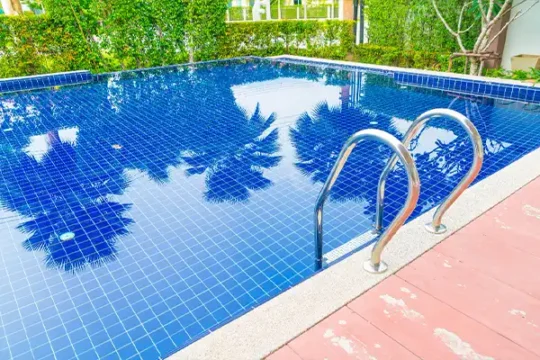TABLE OF CONTENTS
Despite their longevity, concrete pools are susceptible to fractures over time due to settling, shifting foundations, or exposure to harsh chemicals. Regardless of their size, these fractures tend to be ugly and could be a sign of a leak that wastes water and raises the expense of pool care. Fortunately, you can fix these flaws and get your pool back to its original state with the appropriate strategy. This article provides step-by-step instructions to fix cracks in a swimming pool made of concrete, from assessing the degree of damage to selecting the best repair technique for a long-lasting fix.
Prior to Starting
It is necessary to prioritize safety before doing any repairs. Aside from confirming that the power source is turned off, do not forget to unplug any other pool accessories. To see the entire extent of the fracture and to make room for a thorough cleaning, empty the pool completely. Observe the size, depth, and movement of the fracture closely. You must determine if you are dealing with a little or major fissure while evaluating the damage. Does it have sharp-edged or it runs continuously? Also, check for hollowness beneath the surface using a flashlight to examine its depth and a ruler to measure its breadth. This initial valuation helps to determine the extent of damage and direct you towards the best course of action for repair. The seriousness of the damage can help you decide whether to hire a professional or attempt a DIY solution.
Repair Methods
• Minor Crack repair
A do-it-yourself method may be used to fix small fractures in a concrete pool. The initial step is to completely drain the pool below the fracture to ensure the restoration materials have a solid bond. Next, scrape away any loose material or flaking concrete surrounding the fissure with a wire brush or compressed air. You can use a specific pool crack filler or underwater epoxy, depending on how wide the crack is. Make sure you adhere to the application guidelines provided by the manufacturer, which usually call for blending the compound and filling the split up to a smooth overflow margin. Once the filler cures, use sandpaper to create a flush surface with the surrounding pool plaster. Finally, apply pool paint matched to your existing finish to create a seamless look. Remember, this is suitable for hairline cracks and any wider cracks or those exhibiting movement should be assessed by a pool professional.
• Major Crack Repair
Usually, the procedure entails emptying the pool entirely and carefully cleaning the fracture. Depending on how severe the crack is, an expert can use a grinder to expand the gap into a V shape and improve the anchoring of the repair materials. A unique bonding agent is then applied to guarantee a solid bond between the repaired material and original concrete. Pool plaster can be used after hydraulic cement to fill up deep gaps and provide a smooth, waterproof surface. Retaining moisture in affected area is essential during the repair process to prevent the components from drying out too quickly and perhaps fracturing. Based on the degree of damage, this procedure may require extra procedures and calls for complex handling.
Additional Considerations
It is ideal to consult a specialist when dealing with structural flaws in a concrete swimming pool. These deeper fractures have the potential to undermine the structural integrity of the pool and cause leaks, in contrast to tiny surface cracks. An experienced pool contractor may identify the underlying source of the fractures, such as shifting soil or problems with the foundation. After that, they can carry out fixes that focus on the underlying issue as well as the superficial fracture. Re-plastering the pool becomes an essential step in this procedure as it offers a silky, pleasant swimming surface. A fresh coat also serves as a water barrier, stopping further leaks and extending your pool’s lifespan.
Why Call in a Professional?
Although it may seem appealing to take on a do-it-yourself job, particularly for little cracks, fractures in concrete swimming pools can be more difficult than they appear. These fissures may indicate a bigger structural problem or just be cosmetic. A qualified pool service specialist like Artificial Rock Works can assess the extent of the fracture, identify its source such as settling or foundation issues, and guarantee that the repair will hold. This helps you avoid future costly repairs, potential structural damage, and more water loss in addition to saving time and effort.
Fixing a crack in a concrete pool may be straightforward for minor surface cracks, but severe structural issues need professional assistance. You can guarantee a long term solution for your pool’s structural integrity and safety by learning how repairs are performed and recognizing the need of seeking expert assistance for serious fractures.




